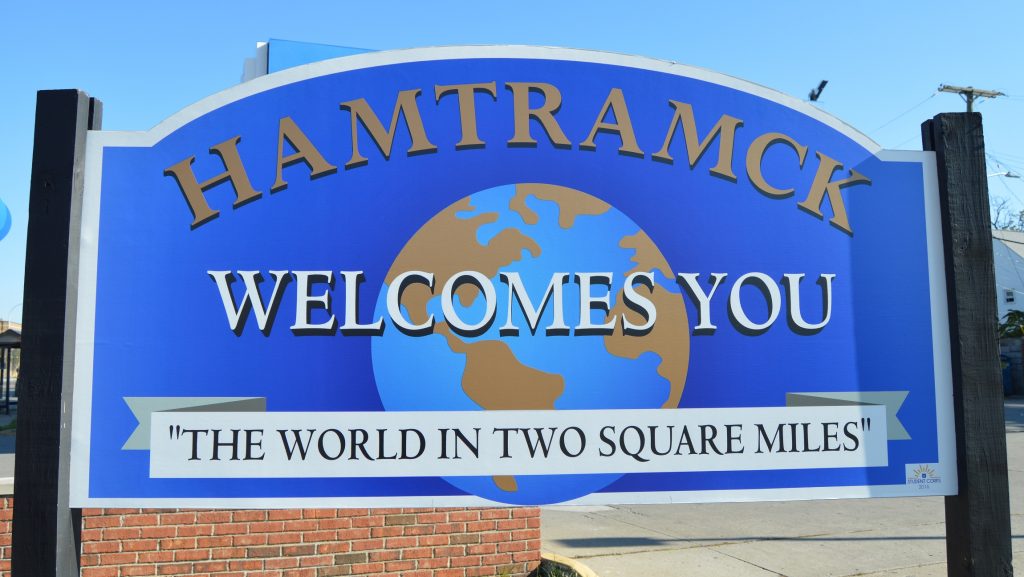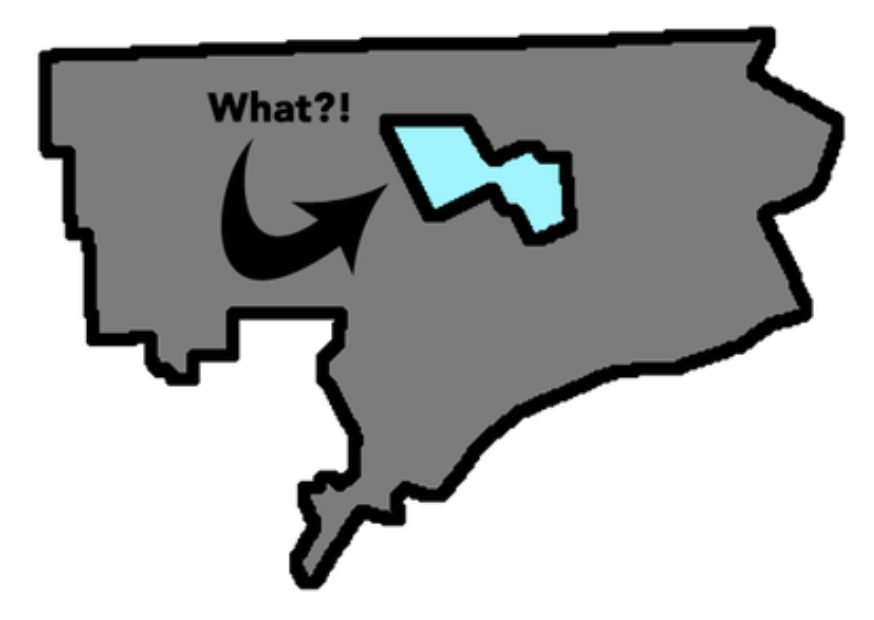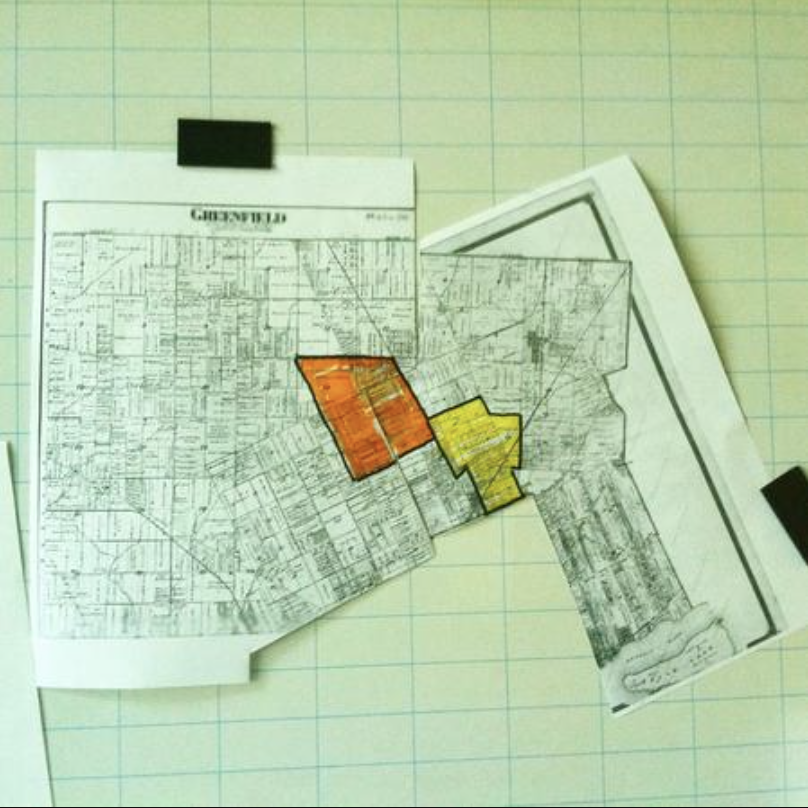Why do Hamtramck and Highland Park exist inside the city of Detroit?
WDET News September 19, 2014Lydia Whitehead asked WDET’s CuriosiD why Hamtramck and Highland Park exist inside the borders of Detroit.

A sign welcoming guests to the city of Hamtramck.
This story is part of our new project called CuriosiD.
Its goal is to take your questions about metro Detroit and answer them. Our first question came from Lydia Whitehead, an English teacher at Old Redford Academy High School in Detroit. She had a question about city borders.
“Based on how Detroit is shaped, when I look at a map I see Highland Park as well as Hamtramck surrounded by Detroit,” she said. “And I’ve always thought that’s really strange. Why do we have cities within our huge city of Detroit?”
The short answer
This story starts off with the idea of protecting a community, and ends up a story of protecting tax rates.

A quick history lesson
Detroit was less than one square mile in size when it incorporated as a city in 1806. And at that time all the land around it was carved up into townships, which were pretty much all farmland.
As Detroit’s population grew, so did its landmass thanks to annexation. Surrounding townships didn’t have a local government and only existed for election and property tax purposes. So cities could easily swallow them up. By 1891, Detroit had annexed its way to the modern day southern borders of Hamtramck and Highland Park.
An encroaching Detroit spurred the areas to take action. And to strengthen local government, Highland Park incorporated as a village in 1889 and Hamtramck followed two years later.
For Hamtramck, it was a group of German shopkeepers and saloon owners who saw potential in the early days of the city. They also saw potential in two crossing railroad lines in the southern end of the city.
“It had its own identity. They wanted to protect that identity,” said Greg Kowalski, Hamtramck’s chief historian. “They didn’t want to be swallowed up by Detroit. And they saw some potential here. There were industries, a couple industries had already moved here. There were two great railroad lines here. So there was potential for future growth here as well.”
For Highland Park, the charge was led by Captain William H. Stevens, a wealthy real estate developer and promoter. Highland Park was mostly carved out of Greenfield Township, which is now all of northwest Detroit up until Greenfield. It’s unclear exactly why Stevens led this charge. We know he dominated the city politically and civically, planning and developing its first extensive waterworks system.
Legislature passes Home Rule City Act
Because these villages now had local governments, they were protected from annexation by Detroit. But in 1908, the Michigan state constitution changed, bringing in one huge component to strong municipalities: the Home Rule City Act.
“So before 1908, the definition of local government and the boundaries of each individual local government were defined in Lansing.” said Eric Lupher, research director for the Citizens Research Council of Michigan. “And the movement away from that, the movement to home rule with the home rule cities act strengthened local government and gave them a lot more security on how the rules worked and how things were going to be done.”

The auto industry’s influence
By the time the Home Rule City Act was introduced, Henry Ford had already purchased land in Highland Park to build his Model T complex. The Dodge Brothers were two years away from opening the Dodge Main in Hamtramck. And as 1915 rolled around, Detroit started moving north again, annexing more and more of Greenfield and Hamtramck townships. Within a year, Detroit had completely surrounded the villages.
At around the same time, the two villages exploded in population thanks to the auto industry. This growth was enticing to Detroit.
There had been formal attempts by Detroit to annex Highland Park and Hamtramck after 1908 but they failed to even make it to a vote. Why? Lupher says the answer is simple. Corporate power.
“The big thing that we were able to find was that this was very much about politics of the day. That you had Henry Ford and Hamtramck and Dodge and Highland Park and they didn’t want to be a part of the city of Detroit and have to pay the city of Detroit’s tax rates,” he said. “So, a lot of the efforts to keep Hamtramck and Highland Park separate from Detroit were spearheaded by those very, obviously, very influential individuals and their corporate interests.”
“You had Henry Ford and Hamtramck, and Dodge and Highland Park, and they didn’t want to be a part of the city of Detroit and have to pay the city of Detroit’s tax rates”
– Eric Lupher. research director for the Citizens Research Council of Michigan
The final step came as the villages incorporated as cities, solidifying the borders we know today. Highland Park incorporated in 1917 and Hamtramck five years later.
The cities would lose their glamour as the auto industry shrank over the decades – Highland Park more so than Hamtramck. But the borders haven’t changed since the late 19th Century when they were first laid out by Captain William Stevens and a group of German shopkeepers and saloon owners.
Here’s an animated gif of Detroit’s annexation efforts through the years from Detroitography:

Support the podcasts you love.
One-of-a-kind podcasts from WDET bring you engaging conversations, news you need to know and stories you love to hear.
Keep the conversations coming. Please make a gift today.
